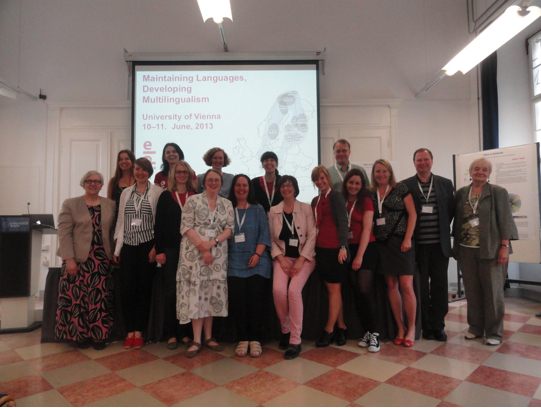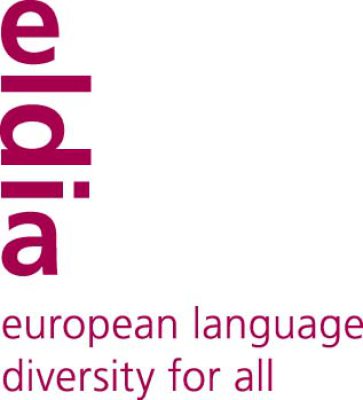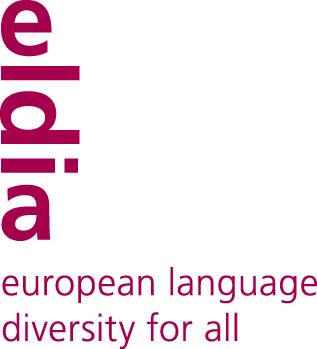ELDIA tried to cover a wide range of critical aspects of language diversity and aimed at those factors which influence the vitality and maintenance of languages. Therefore ELDIA combined linguistic approaches with legal studies, sociology, demographics, statistics and sociolinguistics. Another important aspect was that of policy interventions and media to discover power relationships, stereotypes andattitude of majority and minority media towards minority languages. Within ELDIA, the Åland Islands Peace Institute coordinated and designed research into four main legal-institutional fields: constitutional provisions, language legislation, education legislation and media legislation. The ELDIA project used the critical discourse analysis methodology, what means defining power relations to examine what the text is trying to say. Emphasis wasn’t just on institutional agency, but equally on the role of individuals and individual agency. The focus was on “languaging” and on speakers’ agency, on language ideologies and thereby also on language shift and language loss. The studies conducted within the project contribute considerably to understanding different conceptualizations of multilingualism in Europe today.
The project developed a European Language Vitality Barometer (EULAVIBAR) as a practical and useful output of the ELDIA project research. The EULAVIBAR is based on a large – scale survey. ELDIA outcomes are based upon 12 compatible empirical case studies in 8 countries. The empirical data collection (questionnaires and interviews) were divided into age groups and included majority samples as control groups in research. Afterwards researchers in charge of case studies analyzed the statistical data provided by the statistics work group. The results of these case studies were combined into the final comparative report and on their basis the European Language Vitality Barometer was created. The Barometer looks into four clusters influencing language vitality: Capacity (speaking and understanding the language), Opportunity (to learn it and use a language), Desire (wish to use it) and Language Products (existence and availability of language products and services).
The main results of the analysis were that minorities in Europe are still suffering from discrimination and invisibility, though all countries examined have introduced plenty of non-discriminatory legislation. The analysis confirmed that legal and institutional entrenchment of multilingualism is still lacking. Coherent and long term official policies in this matter have hardly been created and there is a huge absence of detailed legal and linguistic academic research concerning the status of minority languages, proactive ways in language maintenance and long term policies. A core problem is that minority – language education is insufficient and often old-fashioned and monolingual in its conceptualization. The other result of the case studies was that there is today an uneasy legal status in the differentiation between the private and public spheres. The Language Products scores examined are clearly poorer than for the other focus areas and they show us that the demand in all cases is much higher than the availability and possibility to use them. According to the ELDIA findings bilingualism and multilingualism are not actively used in an inclusive and empowering manner. The research in this case shows that language diversity seems not to be a goal in itself while legislation and policy seem to strengthen full integration and possibly assimilation of otherness. The (interim) use of minority languages seems to be understood as the precondition for this integration. While media discourses vary, a common trait can be detected: majority media is often ignorant or uninterested in general of minority concerns and the main focus is most often on folklore, and possibly literature and theater, but not on active political participation and democratization nor on sustainable policy changes.
The general conclusion of ELDIA project is that minorities are still seen as an exception apart from the majority society. A major lesson learned is, however, that language maintenance and revitalization are fully possible and desired by the language speakers.
The full academic version of the Comparative Report shall be published internationally in 2015.
For further information about the ELDIA project and its outcomes, including more than 30 case study and legal reports, two policy briefs, the EuLaViBar materials and the abbreviated Comparative Report see links below:
(web page and presentation and further links to all publications)
https://phaidra.univie.ac.at/detail_object/o:304813
(Comparative Report: short version)
https://phaidra.univie.ac.at/detail_object/o:301101
(EulaViBar Toolkit)
https://www.facebook.com/pages/ELDIA-European-Language-Diversity-for-All/109989592360850
(facebook page)
https://phaidra.univie.ac.at/detail_object/o:76251
(newsletter)
ftp://ftp.cordis.europa.eu/pub/fp7/ssh/docs/eldia-policy-brief-february-2012_en.pdf
(policy brief 1)
https://phaidra.univie.ac.at/detail_object/o:314644
(Policy brief 2)
(Press release)
Eldia researchers at final conference in Vienna, June 2013:



 The project ELDIA (European Language Diversity for All), which started in March 2010 (with funding from the EU 7th programme for research) was completed in early 2014 and most results have now been published. The project sought to contribute to multilingualism in European contexts, taking into account modern European minorities. ELDIA’s aim was to question the ideology of monolingualism and its assumption of simple interconnection between one’s language and ethnic identity. The project was rather based on the assumption that language diversity represents the very basis of equality and individual empowerment. The project has included cases of languages in migrant positions and languages with various situations of formal status. All minority languages analyzed belonged to the Finno – Ugric language family and it was for the very first time that topics like multilingualism and language diversity have been dealt in Finno – Ugrian studies to this extent. The language groups studied in ELDIA do not simply struggle against the decay of their languages but for the visibility and revitalization of them including into new domains like administration, politics and business. The analyzed language situations are: Hungarian in Slovenia, Hungarian in Austria, Estonian in Germany, Seto in Estonia, Võro in Estonia, Veps in Russia, Karelian in Russia, Karelian in Finland, Estonian in Finland, Meankieli in Sweden, Kven in Norway and North Sami in Norway.
The project ELDIA (European Language Diversity for All), which started in March 2010 (with funding from the EU 7th programme for research) was completed in early 2014 and most results have now been published. The project sought to contribute to multilingualism in European contexts, taking into account modern European minorities. ELDIA’s aim was to question the ideology of monolingualism and its assumption of simple interconnection between one’s language and ethnic identity. The project was rather based on the assumption that language diversity represents the very basis of equality and individual empowerment. The project has included cases of languages in migrant positions and languages with various situations of formal status. All minority languages analyzed belonged to the Finno – Ugric language family and it was for the very first time that topics like multilingualism and language diversity have been dealt in Finno – Ugrian studies to this extent. The language groups studied in ELDIA do not simply struggle against the decay of their languages but for the visibility and revitalization of them including into new domains like administration, politics and business. The analyzed language situations are: Hungarian in Slovenia, Hungarian in Austria, Estonian in Germany, Seto in Estonia, Võro in Estonia, Veps in Russia, Karelian in Russia, Karelian in Finland, Estonian in Finland, Meankieli in Sweden, Kven in Norway and North Sami in Norway.
